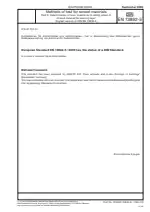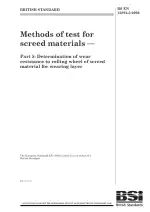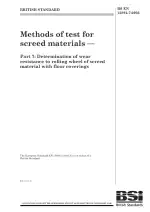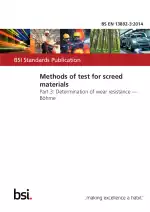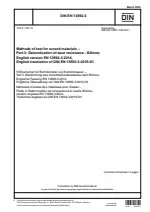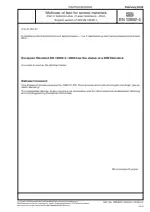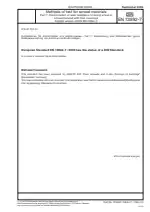Methods of test for screed materials - Part 5: Determination of wear resistance to rolling wheel of screed materials for wearing layer
Also Known As:
The DIN EN 13892-5 standard outlines a method of testing the wear resistance of screed materials for the wearing layer. Specifically, it focuses on the determination of how these materials withstand the effect of a rolling wheel under heavy load. The materials covered in this standard include cementitious screed, modified cementitious screed, calcium sulfate screed, asphalt screed, magnesia screed, and synthetic resin screed.
The test involves creating moulded mortar specimens using the screed materials mentioned above. These specimens are subjected to the rolling wheel, which applies a significant load. The purpose of this test is to evaluate the performance of the screed materials in terms of their resistance to wear caused by the rolling wheel.
By conducting this test according to the DIN EN 13892-5 standard, manufacturers and users of screed materials can assess their durability and suitability for use in wearing layers. The results obtained from this test can help in selecting the most appropriate screed materials for specific applications, ensuring the longevity and performance of the flooring system.
| Descriptors | Base-bonded floor screeds, Cement floors, Construction, Construction materials, Design, Floor beds, Fresh mortar, Inspection, Magnesia floor screeds, Mortars, Properties, Ready-made mortars, Resistance to rolling, Screeds (floors), Specification (approval), Testing, Wear layers |
| ICS Codes | 91.100.10 - Cement. Gypsum. Lime. Mortar |
| Language(s) | English |
| File Size | 542.7 KB |

